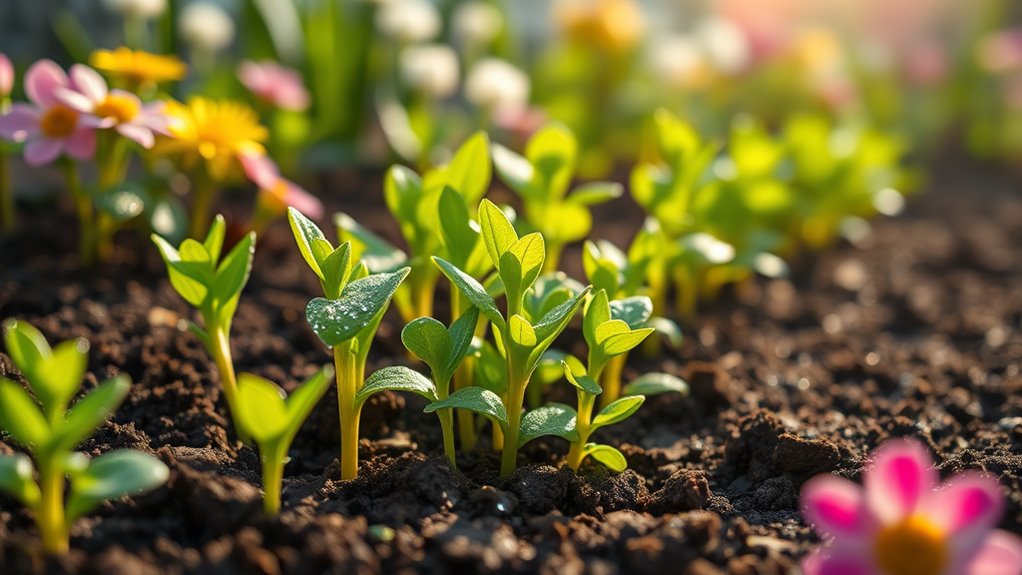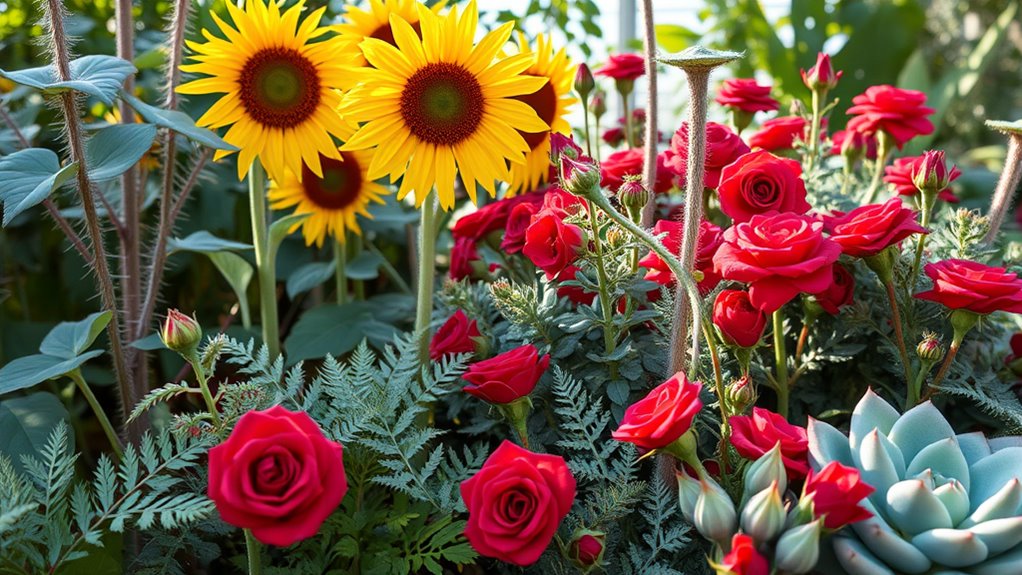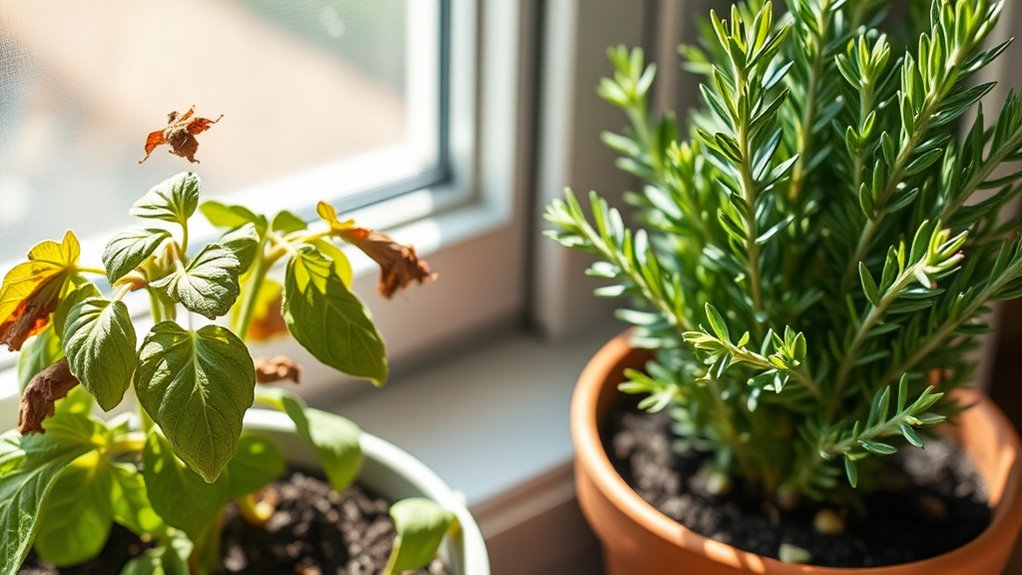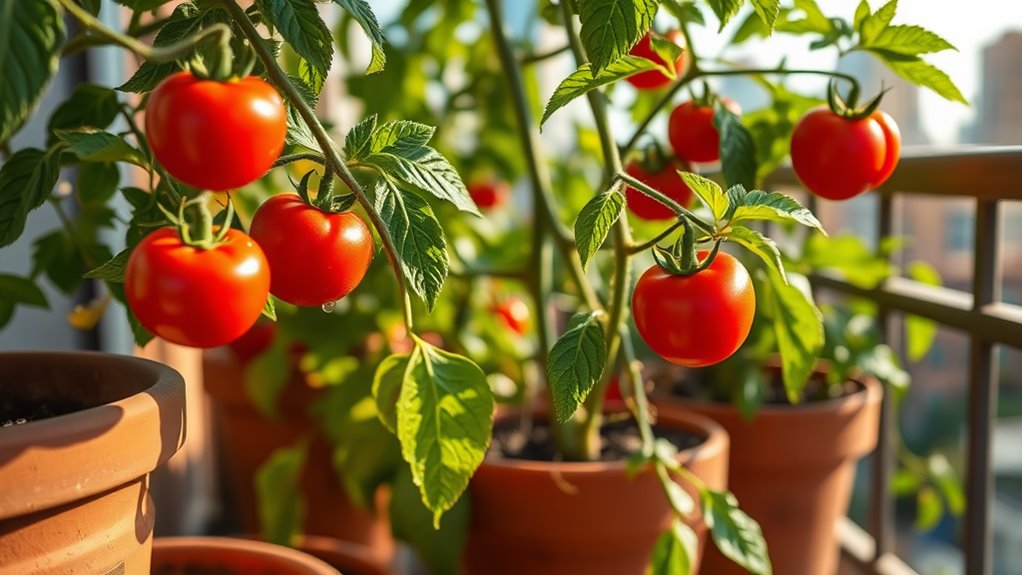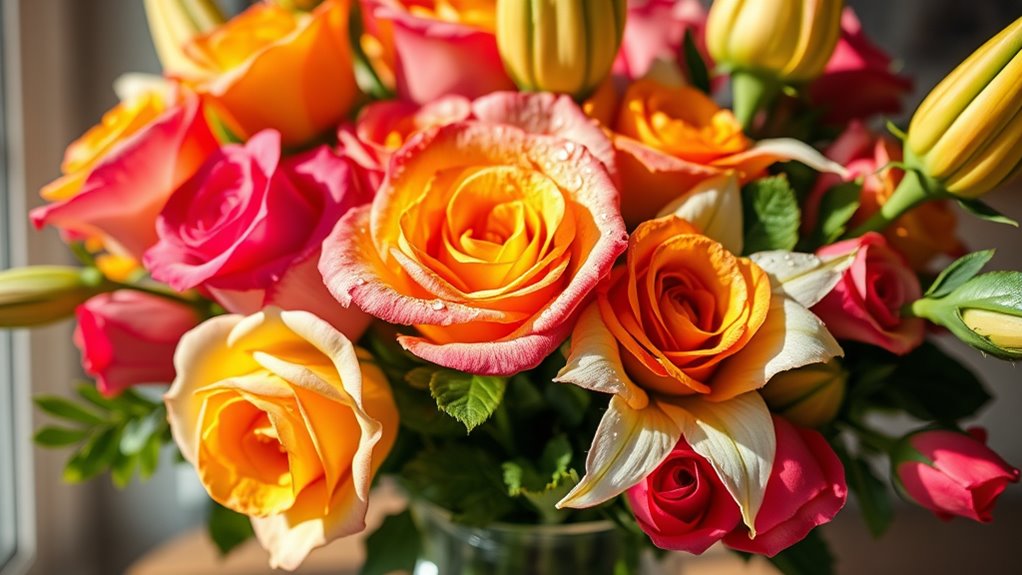The Perfect Time to Plant Herbs for Maximum Flavor
To maximize your herb flavors, you’ll plant warm-season varieties like basil in spring after the last frost, when soil hits 60-70°F for faster germination and robust growth. For cool-season herbs such as parsley, choose early fall or late winter to thrive in milder temps. Always factor in your local climate, soil prep, and moisture levels to avoid stress and enhance taste profiles. Fine-tune these strategies with regional tips and companion techniques waiting just ahead.
Key Takeaways
- Plant warm-season herbs like basil in spring after the last frost to enhance their flavor.
- Sow cool-season herbs such as parsley in early fall or late winter for optimal taste.
- Start herbs indoors from February to April to develop robust plants with maximum flavor.
- Time outdoor planting based on your region’s climate to avoid frost and boost herb potency.
- Monitor soil temperatures, aiming for 60-70°F, to promote faster germination and richer flavors.
Optimal Seasons for Herb Planting
When planting herbs, you might wonder when the best seasons are to ensure robust growth and maximum flavor. For effective herb timing tips, focus on your local climate zone. Incorporating low-maintenance practices can help make your herb garden thrive with minimal effort.
Plant warm-season varieties like basil and mint in spring after the last frost, allowing them to flourish in summer heat.
Cool-season herbs, such as parsley and dill, thrive when sown in early fall or late winter in milder areas. In colder regions, time transplants for late spring to avoid frost damage.
These strategies optimize flavor profiles and plant vigor for a bountiful harvest. Additionally, by following herb timing practices, gardeners can identify optimal planting times throughout the year to enhance flavor in culinary herbs.
Key Factors Affecting Planting Timing
While optimal seasons set a foundation, several key factors refine your planting timing for herbs. To maximize flavor, you’ve got to tailor your approach based on practical realities. Embracing indoor herb growing allows you to enjoy fresh herbs year-round without relying solely on outdoor conditions.
-
Local microclimate: Evaluate your area’s temperature swings and humidity; adjust timing to avoid extremes that stress young plants.
-
Soil temperature: Check that soil reaches the ideal range (e.g., 60-70°F for basil) using a thermometer for faster germination and growth.
-
Frost risk: Time planting after your last expected frost to protect tender herbs from cold snaps, ensuring robust establishment.
Additionally, proper watering techniques are essential for herb success, so focus on avoiding overwatering to prevent root damage and promote vibrant growth.
Best Months for Starting Herbs Indoors
You can kick off your herb-growing journey by focusing on the ideal indoor months, such as late winter to early spring, to maximize seedling success.
Winter starting tips help you maintain optimal warmth and light, ensuring your herbs thrive before outdoor transplanting.
Early year sowing gives you a practical edge, allowing for robust plants that enhance your garden’s flavor potential. Additionally, incorporating low-maintenance herbs can ensure your garden remains vibrant with minimal effort.
For those with limited space, container gardening allows you to grow flavorful herbs that thrive in small areas.
Ideal Indoor Months
As cooler weather sets in, prime months for starting herbs indoors typically span late winter to early spring, such as February through April in the Northern Hemisphere. This timing allows seedlings to establish before outdoor transplanting.
You gain an edge by aligning with these months, as they provide optimal indoor conditions for germination and growth, ensuring robust plants with maximum flavor potential.
-
Choose fast-germinating herbs****: Pick varieties like basil or cilantro that sprout quickly in cooler indoor temps, boosting your success rate.
-
Monitor light and temperature: Use grow lights and maintain 65-75°F to mimic spring conditions, promoting healthy root development.
-
Plan for hardening off****: Gradually acclimate seedlings to outdoor elements, preparing them for transplant without shock.
Winter Starting Tips
Winter starting tips focus on the best months for germinating herbs indoors, typically December through February in the Northern Hemisphere, to leverage cooler temperatures and extend your growing season.
You’ll need high-quality seeds suited for indoor starts, like basil or parsley, planted in well-draining soil mixes.
Maintain consistent moisture and warmth around 70°F using grow lights, as natural light is limited. This approach prevents damping-off and ensures robust seedlings ready for transplanting later.
Monitor for pests early, and rotate trays for even growth—you’re setting up herbs for peak flavor potential.
Early Year Sowing
Early year sowing for herbs indoors runs from January through March in the Northern Hemisphere, building on your winter starts to maximize seedling vigor. This period lets you kickstart growth with longer daylight and controlled conditions, ensuring robust plants for spring.
Focus on herbs like basil, cilantro, and parsley for optimal flavor development.
-
Select quality seeds: Choose varieties suited to your climate; check for high germination rates to avoid failures.
-
Prepare your setup: Use well-draining soil mixes and maintain 70-75°F temperatures with grow lights for 14-16 hours daily.
-
Monitor and adjust: Water consistently to keep soil moist but not soggy, and harden off seedlings before outdoor transplanting.
Outdoor Planting Schedules by Region
When planting herbs outdoors, your region’s climate dictates the optimal schedule to maximize flavor and yield.
In colder areas like USDA zone 3-5, wait until after the last spring frost—typically April to June—to avoid damage and promote strong growth.
Warmer zones, such as 7-9, allow planting in early spring or fall for extended seasons.
In tropical regions, align with the rainy season for moisture, while arid areas favor autumn to escape heat.
Use local weather data and soil thermometers to time planting precisely, ensuring herbs establish quickly and enhance their aromatic compounds effectively. Additionally, incorporating companion planting can further enhance growth and deter pests for a more productive garden.
Always cross-reference with regional extension services for accurate frost dates and microclimate adjustments, tailoring your approach for peak performance.
To further boost your herb yields, consider fall planting in appropriate climates to leverage cooler temperatures and enriched soil conditions for a more robust harvest.
Selecting Herbs for Peak Flavor Development
To achieve peak flavor in your herbs, select varieties that align with your growing conditions and intended use.
You’ll maximize taste by focusing on herbs with strong essential oil profiles and growth cycles that suit your needs, ensuring vibrant flavors in your kitchen.
-
Prioritize flavor intensity: Choose varieties like high-oil basil or potent thyme to enhance your dishes’ aroma and taste.
-
Match to usage: Opt for culinary-specific strains, such as sweet marjoram for teas or oregano for sauces, to align with your recipes.
-
Select resilient types: Pick disease-resistant options to maintain healthy plants, allowing flavors to develop fully without setbacks.
Moreover, consider companion planting basil near tomatoes to enhance herb flavors and overall garden productivity.
Soil and Weather Conditions for Success
When you’re planting herbs, start by preparing your soil with techniques like loosening it and adding organic matter to boost nutrient levels. Moreover, employ companion planting to promote healthier herb growth alongside your herbs.
You’ll need to match your herbs’ temperature needs, selecting varieties that thrive in your local climate’s warmth or coolness.
Finally, monitor ideal moisture levels by keeping the soil consistently damp but not waterlogged to prevent root issues.
Additionally, incorporate organic tips to enhance plant growth and ensure a thriving garden naturally.
Soil Preparation Tips
Before planting your herbs, assess the soil’s texture and pH to ensure it’s well-drained and nutrient-rich, as these factors directly influence root health.
You’ll need to aim for a loamy texture and a pH of 6.0 to 7.5 for optimal nutrient uptake. Conduct soil tests first, then amend as needed to promote vigorous growth.
-
Test soil pH and texture: Use a reliable kit to identify imbalances and adjust with lime or sulfur.
-
Incorporate organic matter****: Mix in compost or aged manure to boost fertility and improve drainage.
-
Aerate the soil: Loosen compacted areas with a fork to enhance root penetration and water flow.
Weather Temperature Needs
While soil sets the foundation for healthy herbs, temperature directly affects their growth and vitality. As a gardener, you must match your herbs’ needs to local conditions for peak flavor and health. Different herbs thrive in specific ranges; for instance, basil flourishes in warmer weather, boosting its oils, while mint tolerates cooler temps without losing vigor.
| Herb | Optimal Temp Range (°F) | Key Growth Tip |
|---|---|---|
| Basil | 70-85 | Plant in full sun |
| Mint | 55-70 | Protect from extreme heat |
| Rosemary | 65-75 | Ensure good air circulation |
You can monitor forecasts and adjust planting to avoid temperature stress, ensuring vibrant, flavorful yields.
Ideal Moisture Levels
Moisture levels directly shape your herbs’ health, just as temperature does, by influencing soil hydration and weather patterns for optimal growth.
You must balance soil moisture to prevent root rot or drought stress, aiming for consistent hydration that supports nutrient uptake.
To achieve this, follow these key practices:
- Test soil regularly: Use a moisture meter to maintain 50-70% saturation, ensuring it’s neither soggy nor dry.
- Monitor weather forecasts: Plant during periods of moderate rain to align with natural cycles, reducing manual watering needs.
- Apply mulching techniques: Cover soil with organic materials like straw to retain moisture and regulate evaporation effectively.
Companion Planting Techniques for Herbs
Companion planting lets you pair herbs strategically to enhance growth, repel pests, and amplify flavors in your garden. For example, you plant basil near tomatoes to ward off insects while intensifying fruit taste through natural compounds.
Chives alongside carrots deter aphids, creating a protective barrier. You group shallow-rooted herbs like cilantro with deeper-rooted ones such as rosemary to optimize soil nutrients and space.
Experiment with marigolds; they release chemicals repelling nematodes, boosting overall herb vigor. Always select companions based on sunlight and water needs for synergistic effects, ensuring a thriving, flavorful harvest. These strategies can also enhance garden health and increase crop yields by utilizing specific plant pairings that thrive together.
Monitoring and Adjusting Planting Schedules
Once you’ve arranged your herbs with strategic companions, you’ll regularly track planting schedules to adapt to changing conditions, such as weather shifts or soil variations, ensuring herbs thrive for peak flavor.
This proactive monitoring helps maximize yields by responding to real-time factors like temperature and moisture.
-
Track weather daily: Use apps or tools to monitor forecasts and adjust schedules, preventing delays from frost or heatwaves.
-
Assess soil weekly: Test pH and nutrient levels, then shift planting times to maintain optimal conditions for growth.
-
Evaluate plants bi-weekly: Observe health indicators like leaf color, and tweak schedules to combat pests or diseases effectively.

